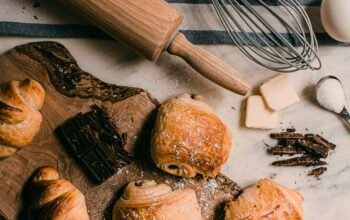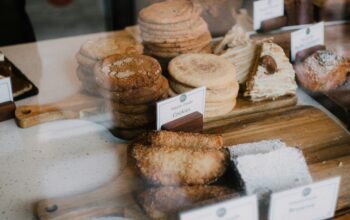Are you tired of settling for mediocre coffee that doesn’t quite hit the spot? Look no further, because we have the solution for you! In our latest article, we will unveil the secrets to finding the perfect coffee beans that match your unique taste preferences. Say goodbye to bland and lackluster brews as we guide you through the vast world of coffee flavors and help you discover the beans that will awaken your senses and satisfy your cravings. Get ready to embark on a journey of exploration and find your perfect cup of joe!
Understanding Coffee Beans
What are coffee beans?
Coffee beans are the seeds of the Coffea plant and are the primary ingredient in the preparation of coffee. These beans undergo a complex process of cultivation, harvesting, processing, roasting, and grinding before they can be brewed into the aromatic and flavorful beverage that many people enjoy.
Different types of coffee beans
There are two main types of coffee beans: Arabica and Robusta. Arabica beans are often considered higher quality and are known for their delicate flavors and acidity. They have a wide range of flavor profiles and are typically grown at higher altitudes. On the other hand, Robusta beans are more robust in flavor and have a stronger, more bitter taste. They contain more caffeine than Arabica beans and are often used in espresso blends for their rich crema.
How coffee beans are roasted
Roasting is a crucial step in the coffee bean journey as it transforms the raw, green beans into the aromatic brown beans we recognize. During the roasting process, the beans are exposed to high temperatures, which causes them to undergo physical and chemical changes. The duration and temperature of the roast affect the flavor, acidity, body, and aroma of the coffee. Each roast level – light, medium, and dark – offers a unique taste profile and character.
The importance of origin and processing methods
The origin of coffee beans refers to the region and country where they are grown. The climate, altitude, soil conditions, and cultivation practices in a particular region all influence the flavor and characteristics of the beans. Additionally, the processing methods used after harvesting also play a significant role in the beans’ final taste. Natural processing, washed processing, and honey processing are some common methods that determine the bean’s flavor nuances.
Identifying Your Taste Preferences
Acidity levels
Acidity is a key component of coffee taste and refers to the brightness and sharpness perceived on the tongue. It can range from low to high levels, with different levels appealing to different palates. Coffee with higher acidity tends to have a vibrant and wine-like flavor, while lower acidity results in a smoother, more mellow taste. Understanding your preference for acidity can help you choose the right coffee beans that match your taste preferences.
Body and mouthfeel
Body refers to the thickness and texture of the coffee when it is in your mouth. It can be light, medium, or full-bodied. Light-bodied coffee tends to feel more delicate and tea-like, while full-bodied coffee has a heavier and creamier mouthfeel. Finding your preferred body can enhance your coffee-drinking experience and ensure you enjoy a cup that suits your personal taste and texture preferences.
Flavor profiles
Coffee beans possess a wide range of flavor profiles, offering a diverse spectrum of tastes and aromas. Some common flavor notes found in coffee include fruity, chocolatey, nutty, floral, and earthy. Exploring different flavor profiles can be an exciting journey as you discover the complexities and nuances that each coffee bean variety offers. Paying attention to the flavor profiles can help you choose coffee beans that align with your taste preferences and allow you to savor the specific flavors you enjoy.
Strength and caffeine content
The strength of coffee refers to the intensity of its flavor and often correlates with the caffeine content. While not all strong coffee contains high caffeine levels, it is generally a good indicator. Some coffee drinkers prefer a bold and intense cup to kick-start their day, while others may prefer a milder brew. Knowing your desired strength and caffeine content can guide you in selecting the coffee beans that will provide you with the ideal morning boost or a soothing afternoon indulgence.
Exploring Coffee Bean Varieties
Arabica beans
Arabica beans are the most widely consumed and highly regarded coffee beans worldwide. Known for their delicate flavors, complexity, acidity, and aromatic qualities, Arabica beans offer a range of notes that can include floral, fruity, and even hints of caramel and chocolate. They thrive at higher altitudes and require meticulous cultivation and handling to maintain their quality. Arabica beans are often favored by coffee enthusiasts who appreciate the distinctive nuances and intricate tastes that this variety offers.
Robusta beans
Robusta beans are stronger and more bitter in taste compared to Arabica beans. They contain almost double the caffeine content of Arabica beans, making them popular in espresso blends for their ability to create a rich crema. Robusta beans have a more earthy and nutty flavor profile, with less acidity than Arabica beans. They are also valued for their greater resistance to pests and diseases, making them easier to cultivate in different environments. Robusta beans are often used in blends to provide body and an extra kick of caffeine.
Other specialty coffee bean varieties
Apart from Arabica and Robusta beans, there are numerous specialty coffee bean varieties that offer unique and distinct flavors and characteristics. Some of these varieties include Bourbon, Typica, Geisha, and Pacamara. Each variety has its own growing conditions, flavor profiles, and regional specialties. Exploring these specialty coffee bean varieties can lead to delightful discoveries and broaden your coffee taste horizons.
Roast Levels and Their Impact
Light roast
Light roast coffee beans are roasted for a relatively shorter duration, resulting in a light brown color. This roast preserves the bean’s original flavors, acidity, and subtle nuances. Light roast coffee typically has a higher acidity level, a lighter body, and flavors that highlight the bean’s origin and unique characteristics. It is ideal for those who prefer a more delicate, complex, and vibrant coffee experience.
Medium roast
Medium roast strikes a balance between the characteristics of light and dark roast levels. It showcases a slightly darker brown color and offers a well-rounded and balanced flavor profile. Medium roast coffee tends to have medium acidity, body, and a fuller flavor compared to light roasts. This roast level allows the natural flavors of the beans to shine while also displaying some of the caramelization and richness associated with darker roasts.
Dark roast
Dark roast coffee beans undergo a longer and more intense roasting process, resulting in a dark brown color with a shiny surface and oiliness. Dark roast coffee is often associated with rich and intense flavors, lower acidity, and a fuller body. The extended roasting brings out bold and smoky notes, along with caramel and chocolate undertones. This roast level is favored by those who enjoy a robust and bolder coffee experience.
Effects on flavor and aroma
The roast level significantly affects the flavor and aroma of the coffee beans. Lighter roasts tend to have brighter, more acidic flavors, with the origin characteristics being more pronounced. As the roast level gets darker, the flavors become richer, bolder, and more caramelized. The aroma also changes as the beans are exposed to higher temperatures. It is important to consider the roast level when choosing coffee beans to ensure they align with your taste preferences and desired flavor profiles.
Understanding Coffee Packaging
Whole bean vs. pre-ground
Coffee beans are commonly available in two forms: whole bean and pre-ground. Whole bean coffee offers the advantage of retaining optimal freshness since the flavor and aroma remain intact until you grind the beans. Grinding the beans just before brewing ensures a superior cup of coffee. Pre-ground coffee, on the other hand, provides convenience and saves time, but it can compromise the freshness and flavor due to increased exposure to air and moisture. Choosing between whole bean and pre-ground coffee depends on your preference for maximum freshness or convenience.
Packaging types and their impact on freshness
When it comes to coffee packaging, airtight containers or bags with a one-way valve are crucial for preserving freshness. Airtight packaging helps protect the coffee beans from exposure to air, moisture, light, and other external factors that can compromise the quality. Coffee bags with a one-way valve allow the release of carbon dioxide while preventing oxygen from entering, prolonging the beans’ freshness. Proper packaging can help maintain the optimum flavor and aroma of the coffee beans until they are ready to be brewed.
Storage tips for preserving coffee beans
To prolong the shelf life of your coffee beans and maintain their freshness, it is important to store them properly. Coffee beans should be stored in a cool, dry, and dark place, away from direct sunlight, heat, and moisture. It is recommended to keep them in an airtight container or the original packaging with the resealable feature. Avoid freezing or refrigerating coffee beans as exposure to temperature fluctuations can negatively impact the integrity of the beans. By following these storage tips, you can ensure that your coffee beans stay fresh and provide an optimal flavor experience.
Exploring Single-Origin vs. Blended Coffees
Benefits of single-origin coffees
Single-origin coffees come from a specific region or farm, allowing you to experience the unique flavors and characteristics of the beans from that particular origin. By focusing on a single source, you can appreciate the terroir and the impact of the growing conditions on the coffee’s flavors. Single-origin coffees often showcase a more pronounced acidity and intricate flavor profiles, offering a delightful journey through the various coffee-growing regions.
Advantages of blended coffees
Blended coffees combine beans from different origins and roasts to create a unique flavor profile. Blending offers the opportunity to balance and enhance specific characteristics, resulting in a harmonious and well-rounded cup of coffee. Blends can provide consistency in taste and quality, making them a popular choice among coffee lovers who prefer a familiar and reliable flavor experience. Additionally, blends often offer a wider range of flavors, making them suitable for various brewing methods.
Determining which option suits your taste preferences
Deciding between single-origin and blended coffees depends on your personal taste preferences and the kind of coffee experience you seek. If you enjoy exploring different flavor profiles and want a coffee that showcases the distinct qualities of a specific region, single-origin coffee may be the right choice. On the other hand, if you prefer a well-balanced and consistent flavor profile or the versatility to use the coffee for different brewing methods, a blended coffee might be the better option. It’s worth experimenting with both to discover the styles that best match your coffee preferences.
Grind Size and Brewing Methods
Different grind sizes for various brewing methods
The grind size of coffee beans is essential for achieving optimal extraction during the brewing process. Different brewing methods require specific grind sizes to ensure the right balance of flavor, strength, and extraction. For example, espresso requires a fine grind, while pour-over methods benefit from a medium grind. French press and cold brew methods, on the other hand, call for a coarse grind to prevent over-extraction. Choosing the appropriate grind size for your preferred brewing method is crucial in obtaining the best possible cup of coffee.
Impact of grind size on flavor extraction
The grind size directly affects the surface area and contact time between water and coffee particles during brewing. Finer grinds expose a larger surface area, resulting in faster extraction and stronger flavors. Coarser grinds reduce the extraction speed that allows for a smoother and milder cup. The grind size also affects the balance between acidity and bitterness, as varying extraction levels can change the flavor profile. Understanding the impact of grind size on flavor extraction empowers you to tailor your brewing process to achieve your desired taste experience.
Choosing the right grind size for your coffee
Experimentation and personal preference play a crucial role in determining the right grind size for your coffee. It is recommended to start with the grind size recommended for your chosen brewing method and then make adjustments based on your taste preferences. If your coffee tastes too bitter or weak, adjust the grind size accordingly. Refining your grind size to match your preferred brewing method and taste preferences can significantly enhance your coffee enjoyment and ensure a consistently excellent brew.
Buying Coffee Beans
Local roasteries vs. online retailers
When purchasing coffee beans, you have the option to buy from local roasteries or online retailers. Local roasteries offer the advantage of a direct and personalized experience. You can interact with the roasters, learn about their coffee sourcing and roasting techniques, and often sample different beans. Online retailers, on the other hand, provide convenience, a wider selection, and the ability to explore different coffee origins from around the world. They often provide detailed descriptions and customer reviews to assist in choosing the right beans. Deciding between local roasteries and online retailers depends on your preference for personal interaction or convenience and selection.
Reading coffee bean labels and descriptions
Coffee bean labels and descriptions provide valuable information about the origin, roast level, flavor notes, and processing methods. Labels often mention the country or region of origin, allowing you to understand the coffee’s potential flavor profile. Roast levels and flavor profiles can help you determine the taste characteristics you might experience. Detailed descriptions highlight the nuances that make a particular coffee bean unique and special. Paying attention to these details can guide your purchasing decisions and ensure you select coffee beans that align with your taste preferences.
Factors to consider when purchasing coffee beans
Several factors should be considered when purchasing coffee beans. The first is freshness, as coffee beans are at their best when consumed within a few weeks of being roasted. Consider the roast date mentioned on the packaging to ensure you are buying freshly roasted beans. Additionally, factors such as your preferred flavor profiles, roast levels, and origin preferences should be taken into account. Considering the brewing methods you frequently use and the grind size compatibility can help you select beans that are suitable for your preferred brewing style. Lastly, be mindful of your budget and explore different price ranges that offer quality beans within your desired range.
Experimenting with Flavor Profiles
Flavor notes to look for in coffee
Coffee tasting involves identifying distinct flavor notes present in the brew. Common flavor notes found in coffee include fruity, floral, chocolatey, nutty, caramel, herbal, and earthy. Fruity flavors can range from berries to citrus, while floral notes can evoke floral aromas like jasmine or lavender. Chocolatey flavors exhibit a rich and smooth taste, while nutty notes can resemble almonds or hazelnuts. Caramel flavors offer a sweet and buttery taste, while herbal and earthy notes provide a rich, grounding experience. Exploring and identifying these flavor notes can help you savor the complexities and nuances of different coffee beans.
Understanding the coffee tasting wheel
The coffee tasting wheel is a visual representation of the various flavor profiles and characteristics found in coffee. It helps coffee enthusiasts describe and categorize the specific flavors and aromas they detect while tasting coffee. The wheel typically consists of different sections, each representing a flavor category. Examples of these categories include fruity, floral, sweet, sour, nutty, and earthy. By using the coffee tasting wheel, you can develop a structured approach to understanding and discussing the flavors present in your cup of coffee.
Trying different coffee beans to expand your palate
One of the joys of being a coffee lover is the opportunity to explore and experiment with different coffee beans. Trying beans from various origins, roast levels, and flavor profiles can significantly expand your palate and deepen your understanding of what you enjoy in a cup of coffee. Whether it’s sampling single-origin beans from different regions or exploring unique blends, each new coffee bean offers a chance to embark on a flavor adventure and discover your personal favorites. Embrace the journey of trying different coffee beans and take note of the flavors and characteristics that excite your taste buds.
Brewing and Enjoying Your Perfect Cup
Choosing the right brewing equipment
Selecting the right brewing equipment is essential in achieving your perfect cup of coffee. There are several popular brewing methods to choose from, including drip brewing, pour-over, French press, espresso machines, and moka pots, among others. Each method has its own unique brewing parameters, which can affect the flavor, strength, and aroma of the coffee. Consider factors such as convenience, desired brewing time, and the level of control you prefer over the brewing process. Investing in quality brewing equipment that suits your preferences can elevate your coffee experience and ensure consistent and satisfying results.
Step-by-step guide to brewing coffee
While the specific steps may vary depending on the brewing method you choose, here is a general guide to brewing coffee:
- Start by measuring the appropriate amount of coffee beans according to your desired coffee-to-water ratio. A standard ratio is 1:16, meaning one part of coffee to sixteen parts of water.
- Grind your coffee beans to the appropriate size for your brewing method.
- Heat water to the desired temperature. Different brewing methods require different temperatures, ranging from 195°F to 205°F (90°C to 96°C).
- Preheat your brewing equipment to help maintain the temperature during brewing.
- Add the ground coffee to the brewing equipment and evenly distribute it.
- Slowly pour the hot water over the coffee grounds, ensuring they are thoroughly saturated. Use a circular or back-and-forth motion to promote even extraction.
- Allow the coffee to steep or brew for the recommended time based on your chosen brewing method.
- Once the brewing is complete, carefully pour the brewed coffee into your cup, avoiding any sediment or grounds.
- Enjoy your freshly brewed cup of coffee as it is or add any desired additions such as milk, sugar, or spices.
Enhancing your coffee experience with proper serving
The way you serve your coffee can enhance your overall experience and provide added enjoyment. Consider using a proper coffee cup or mug that has an appropriate size and thickness to retain the heat without burning your hands. Adding artful latte designs or frothed milk to your coffee can elevate the aesthetic appeal and create a delightful sight before taking the first sip. If serving coffee to guests, presentation and attention to detail can make it feel special. Additionally, setting aside a quiet moment to savor the aroma and flavors of your coffee can further enhance the enjoyment of each sip.
By understanding coffee beans, identifying your taste preferences, exploring bean varieties, considering roast levels, grasping coffee packaging, choosing between single-origin and blended coffees, understanding grind size and brewing methods, buying coffee beans, experimenting with flavor profiles, and brewing and enjoying your perfect cup, you can embark on a flavorful and fulfilling coffee journey tailored to your unique preferences. So grab a bag of your favorite coffee beans, brew a fresh cup, and savor the complex and inviting flavors that coffee has to offer. Cheers to your coffee exploration!



